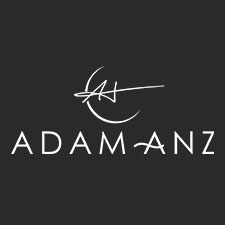
Shoulder anatomy involves three bones and two important joints: the scapula (shoulder blade), the humerus (upper arm bone), and the clavicle (collarbone) are the bones of the shoulder. The two joints of the shoulder are the glenohumeral joint (joint between the humerus and scapula) and the acromioclavicular joint (joint between the clavicle and scapula). The acromion, from the Greek Akros-shoulder and omos shoulder, is a portion of the scapula which is palpable on the outside portion of the shoulder. The acromion and clavicle meet above the glenohumeral joint at the acromioclavicular joint, also known as the AC joint for short. This joint is held together by ligaments between the acromion and clavicle which stabilize the AC joint and are known as AC ligaments. In addition, important ligaments between the clavicle and coracoid, another portion of the scapula, are also important in stabilizing the AC joint and entire shoulder; these ligaments are known as CC ligaments. The AC and CC ligaments can become injured during direct contact onto the shoulder, such as when a football player is tackled and lands directly on the side of his shoulder. Injuries to the AC ligaments and CC ligaments can be associated with displacement of the shoulder blade in relation to the collar bone, an injury sometimes referred to as a shoulder separation. This injury is not to be confused with a shoulder dislocation, which is when displacement occurs at the glenohumeral joint.
AC joint injuries are graded in severity and labeled Type I-VI. Type is classified by displacement of the acromion in relation to the clavicle with suspected injury to the AC and CC ligaments based upon this displacement. Displacement typically involves the acromion below the clavicle; however, on x-ray this is often interpreted as the clavicle being above the acromion.
- Type I: No Separation on X-ray, pain with palpation at AC joint, mild stretch of AC ligaments
- Type II: 0-100% separation at AC joint on X-ray, tearing of AC ligaments with stretching of CC ligaments
- Type III: 100-125% separation at the AC joint on X-ray, tearing of AC and CC ligaments
- Type IV: Displacement of the clavicle posteriorly on X-ray with injury to the AC and CC ligaments
- Type V: Displacement of between 125% to 300% on X-ray with acromion below calvicle.
- Type VI: An AC joint separation where the clavicle is displaced 100% or more below the acromium on X-ray. This injury is quite severe and extremely rare
Symptoms
AC joint injuries vary according to the spectrum of damage of the AC and CC ligaments. Patients who present with Type I and II injuries will experience milder symptoms that include tenderness over the AC joint, minor swelling, pain during movement, and a mild to moderate deformity that may be visible to the eye. In more severe cases, symptoms will be more extreme and bruising will also appear on the outside of the skin. Most patients note hearing a popping sound at the time of the initial injury. This is caused by the disruption of the AC joint at the time of injury. A higher-grade injury will almost always result in a prominent bump on the shoulder, severe pain, and limited mobility.
Diagnosis
AC joint injuries are relatively easy to diagnose. However, the severity can vary so greatly that an X-ray or MRI may be necessary to fully determine the extent of injury and treatment recommendation. During the initial visit, Dr. Anz will examine the shoulder to evaluate the injury. On examination, patients with an AC joint injury usually have tenderness directly over the AC joint and pain when bringing their arm across the body. It is important to determine upon examination if other shoulder structures may have been damaged. If this is suspected, an MRI is important to evaluate for associated injury.
Treatment
Dr. Anz will attempt to treat the injury in the most conservative way possible. For minor AC joint injuries where a mild sprain or low-grade separation exists, he will prescribe anti-inflammatory medications, a sling for comfort, and a protocol of rest with therapy for rehabilitation when appropriate. A majority of the milder injuries can successfully be treated non-operatively (without surgery).
Surgical Treatment
For higher grade AC joint injuries, surgery may be needed in order to repair or reconstruct the ligaments involved in the injury and address nearby structures. The ultimate goal during surgery to treat the AC Joint is to stabilize the joint and correct the separation of the clavicle and acromium. Dr. Anz will discuss surgical options with patients and agree upon the most appropriate technique when necessary. Open stabilization and arthroscopically assisted stabilization techniques are both used depending on the clinical scenario.
Post-Operative
Following shoulder surgery of any kind, Dr. Anz will prescribe a thorough and detailed post-op rehabilitation program. Rehab following an AC joint surgery will often span about three months during which physical therapy incorporating strengthening exercises will be slowly incorporated. Physical therapy is a team effort between Dr. Anz and his patients so that an optimal outcome can be achieved. Most athletes are able to resume their sports within 4-6 months following surgery.
For additional information on AC joint injuries and shoulder separations, or to learn more about arthroscopic shoulder surgery, please contract the office of Dr. Adam Anz, orthopedic shoulder surgeon in Gulf Breeze, FL.
